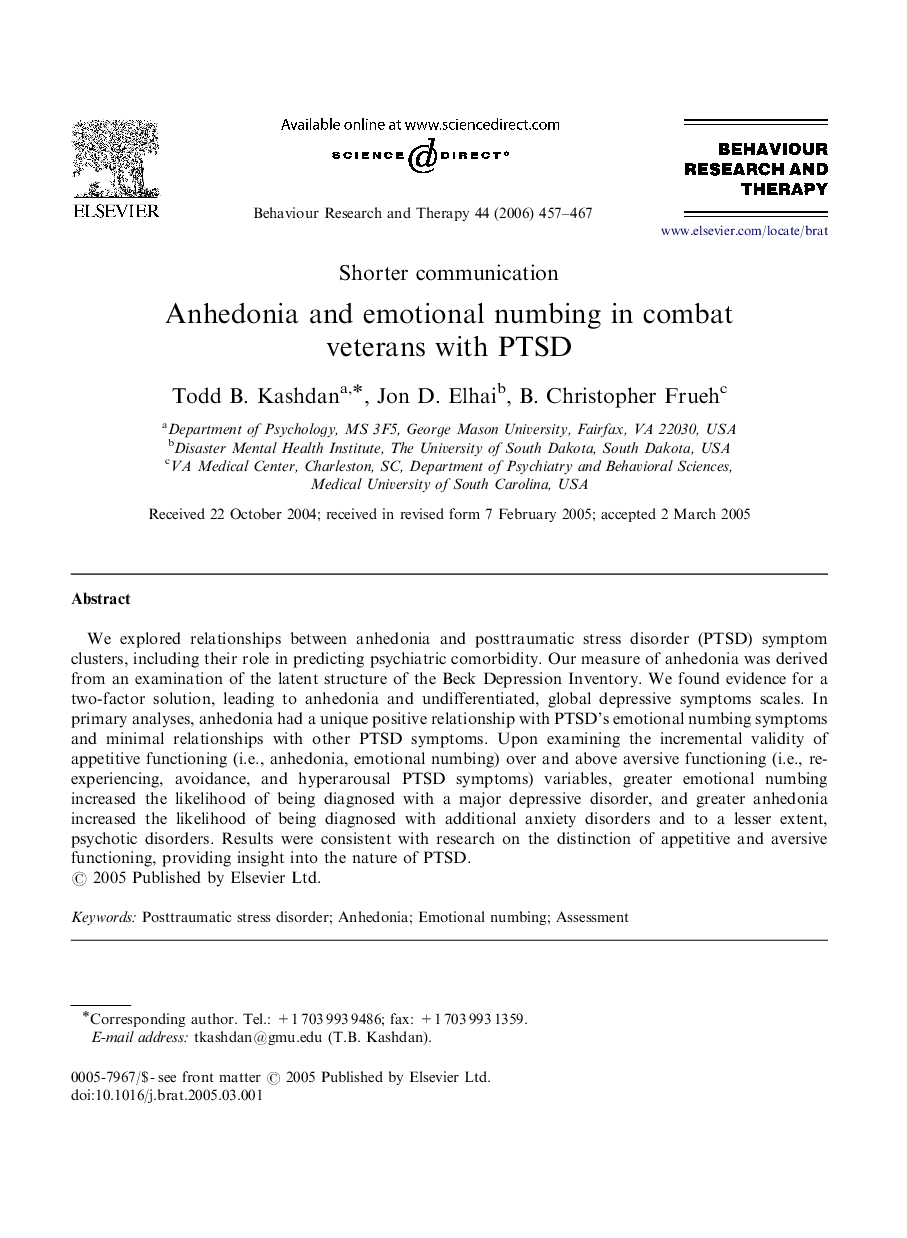| Article ID | Journal | Published Year | Pages | File Type |
|---|---|---|---|---|
| 902616 | Behaviour Research and Therapy | 2006 | 11 Pages |
We explored relationships between anhedonia and posttraumatic stress disorder (PTSD) symptom clusters, including their role in predicting psychiatric comorbidity. Our measure of anhedonia was derived from an examination of the latent structure of the Beck Depression Inventory. We found evidence for a two-factor solution, leading to anhedonia and undifferentiated, global depressive symptoms scales. In primary analyses, anhedonia had a unique positive relationship with PTSD's emotional numbing symptoms and minimal relationships with other PTSD symptoms. Upon examining the incremental validity of appetitive functioning (i.e., anhedonia, emotional numbing) over and above aversive functioning (i.e., re-experiencing, avoidance, and hyperarousal PTSD symptoms) variables, greater emotional numbing increased the likelihood of being diagnosed with a major depressive disorder, and greater anhedonia increased the likelihood of being diagnosed with additional anxiety disorders and to a lesser extent, psychotic disorders. Results were consistent with research on the distinction of appetitive and aversive functioning, providing insight into the nature of PTSD.
